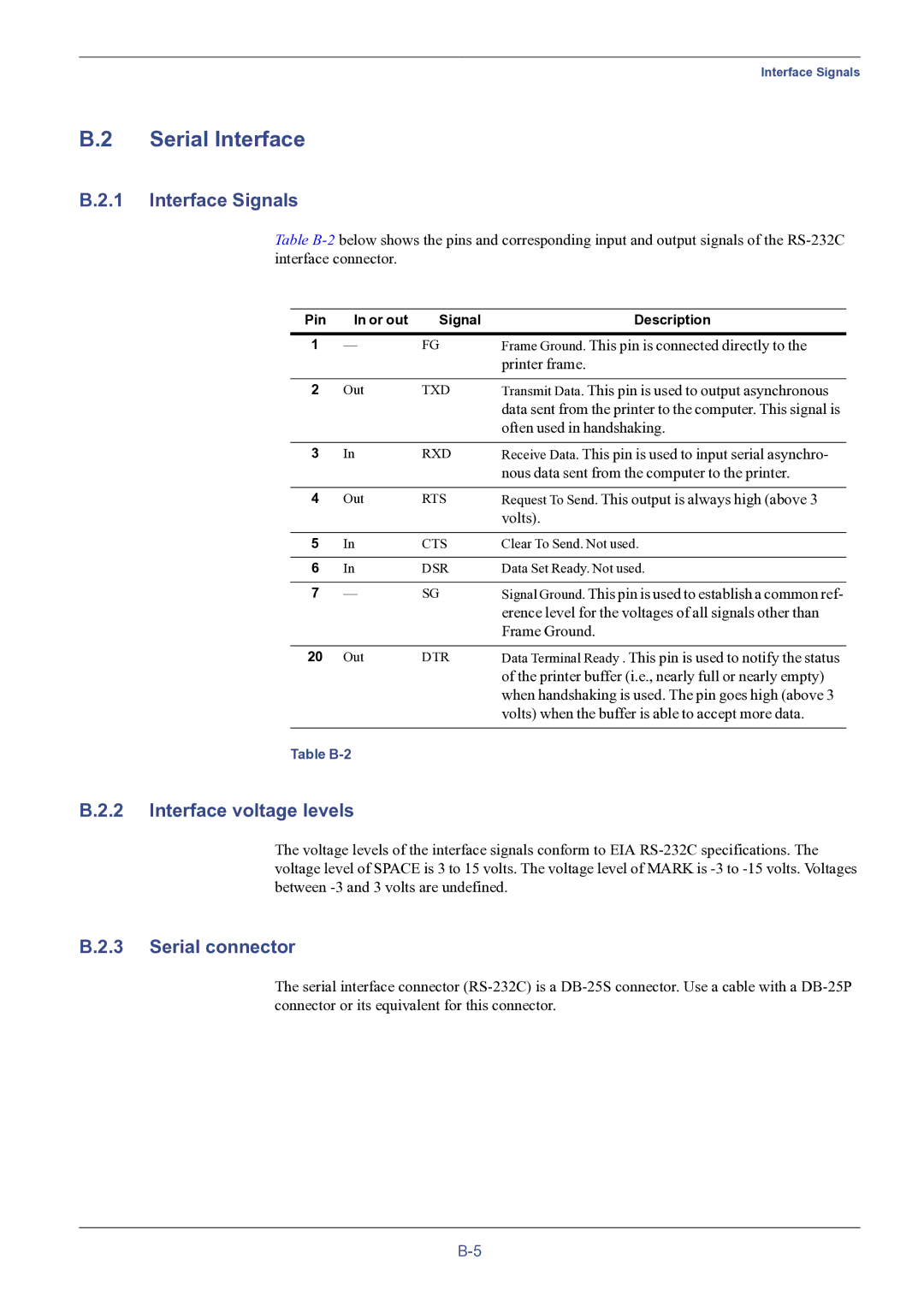
Interface Signals
B.2 Serial Interface
B.2.1 Interface Signals
Table
Pin | In or out | Signal | Description |
1 | — | FG | Frame Ground. This pin is connected directly to the |
|
|
| printer frame. |
|
|
|
|
2 | Out | TXD | Transmit Data. This pin is used to output asynchronous |
|
|
| data sent from the printer to the computer. This signal is |
|
|
| often used in handshaking. |
|
|
|
|
3 | In | RXD | Receive Data. This pin is used to input serial asynchro- |
|
|
| nous data sent from the computer to the printer. |
|
|
|
|
4 | Out | RTS | Request To Send. This output is always high (above 3 |
|
|
| volts). |
|
|
|
|
5 | In | CTS | Clear To Send. Not used. |
|
|
|
|
6 | In | DSR | Data Set Ready. Not used. |
|
|
|
|
7 | — | SG | Signal Ground. This pin is used to establish a common ref- |
|
|
| erence level for the voltages of all signals other than |
|
|
| Frame Ground. |
|
|
|
|
20 | Out | DTR | Data Terminal Ready . This pin is used to notify the status |
|
|
| of the printer buffer (i.e., nearly full or nearly empty) |
|
|
| when handshaking is used. The pin goes high (above 3 |
|
|
| volts) when the buffer is able to accept more data. |
|
|
|
|
Table
B.2.2 Interface voltage levels
The voltage levels of the interface signals conform to EIA
B.2.3 Serial connector
The serial interface connector
